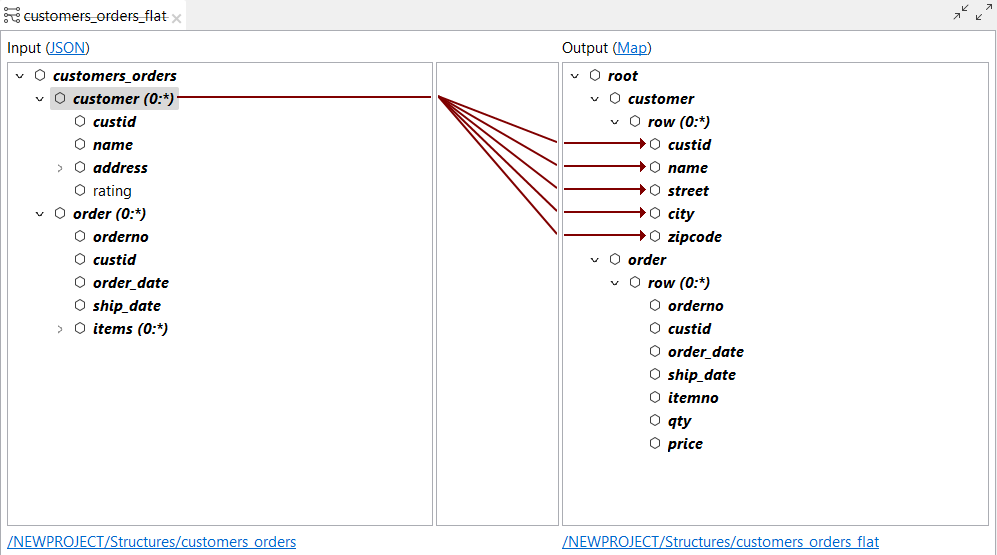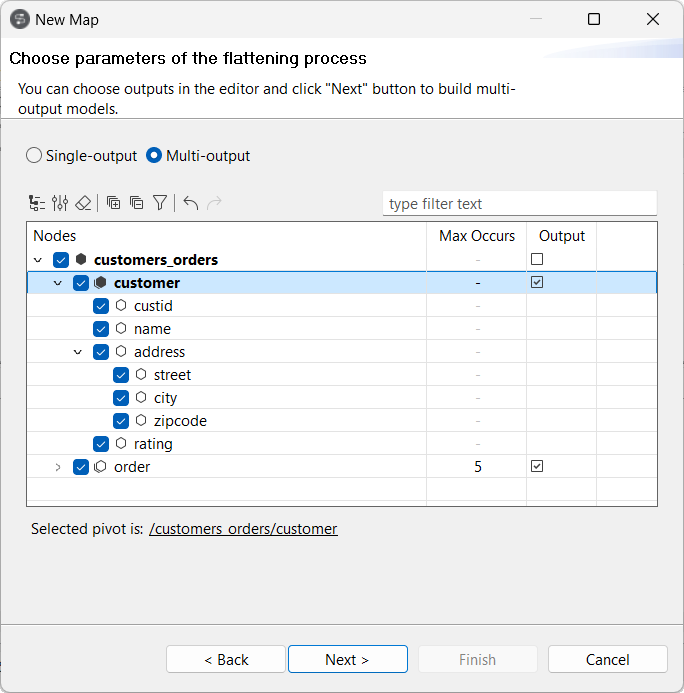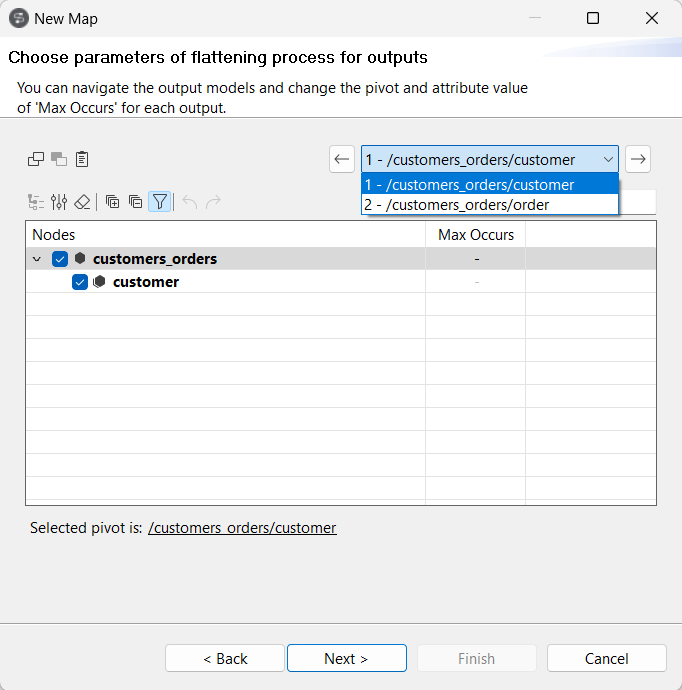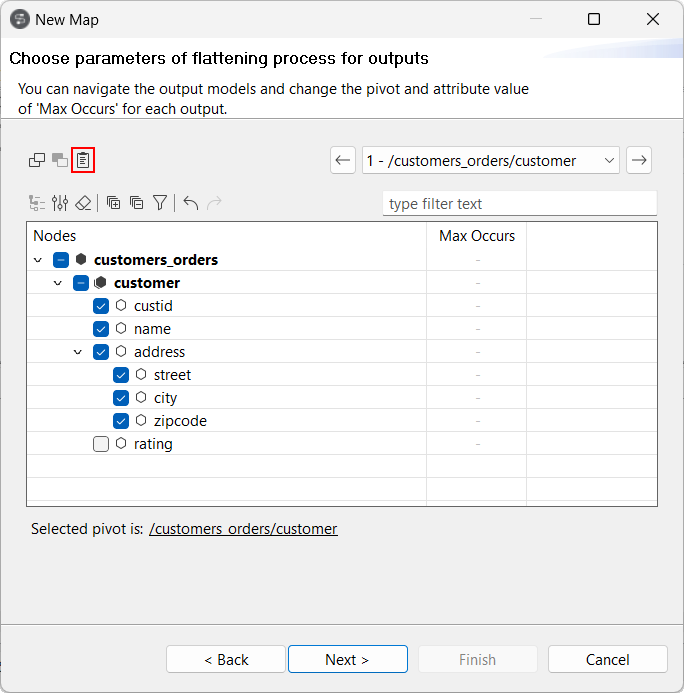Creating a flattening map with multiple outputs
Before you begin
- You have created a hierarchical structure.
About this task
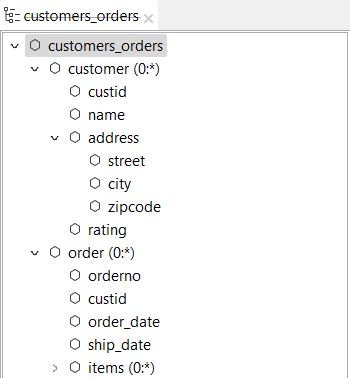
Procedure
Results
Your map and output structures are created. In the selected folder, one structure is created for each output, and another structure is created to combine them. The map opens and the elements from the input structure are automatically mapped with the elements in the output structure.
In this example, it looks like this:
